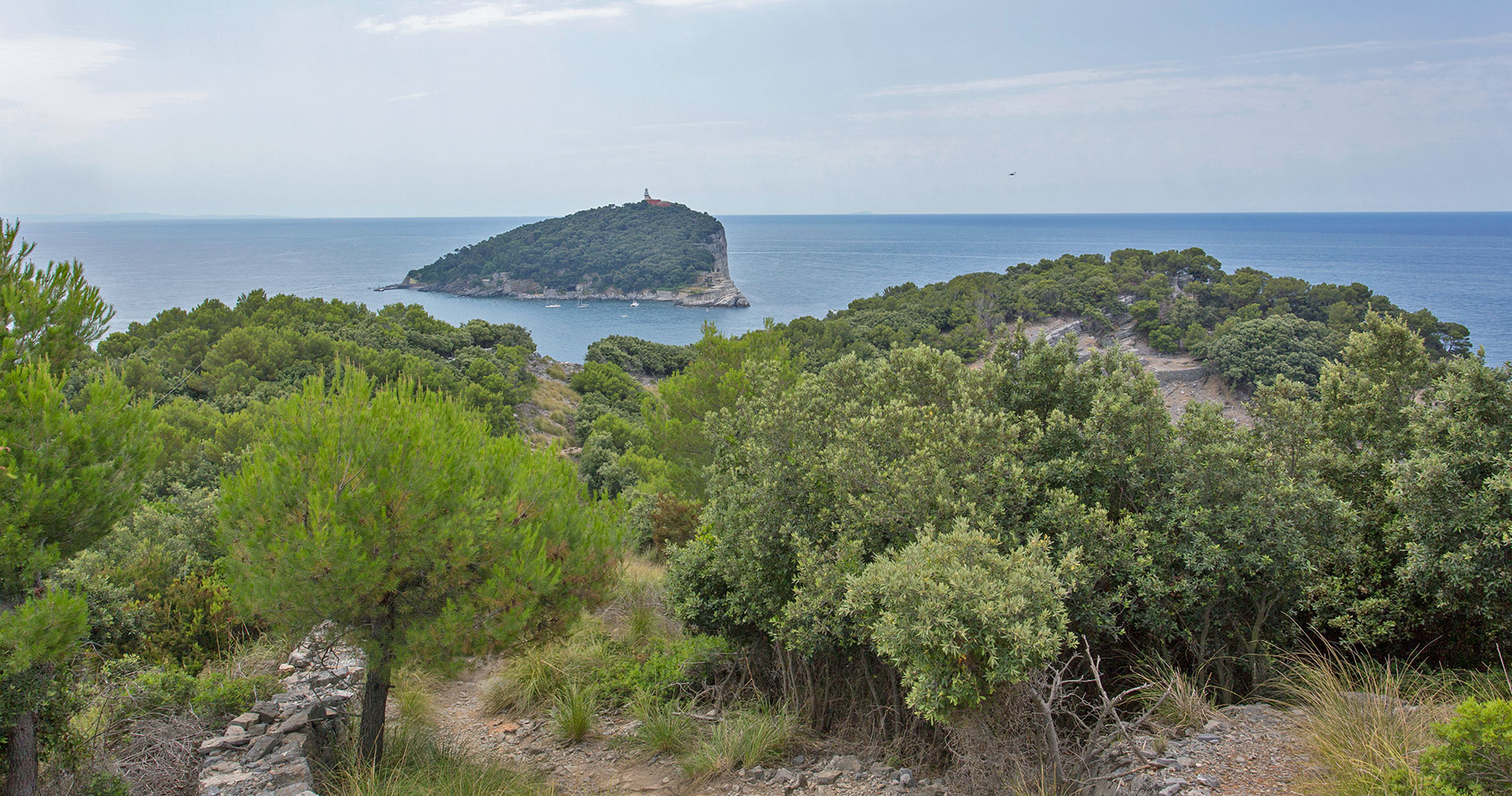Making our way up path 510, a wide dirt trail, we pass by a small church and—with a short detour—Fortezza Umberto I, which is open to the public. Then another easy dirt trail takes us to an overlook of two creeks, the Schenello and Fornace, where hikers can admire Torre Scola. The path then leads us through thick bush, reaching a clearing with panoramic views, the former location of the Casa Del Roccio. From here, we have particularly good views of Tino island. Afterwards, a steep descent over the coast of Pozzale, with sea transportation and a restaurant bar.
From near the portoro marble quarries, we go up behind Punta Dante, passing over the wild Cala Grande as we make out way to the top of the island, to the Semaforo. The former military battery of the same name has been converted into a hostel and environmental education center, surrounded by a picturesque botanical trail. Finally, a steel descent leads us to the Carlo Alberto coastline. We recommend a few brief stops along the way to enjoy amazing views: stop at the small church dedicated to San Pietro above the cliff to admire Castello Doria dominating the view of Porto Venere, and from the steep walls of Mount Muzzerone, admire the harsh and rugged landscape of Tramonti to the east of Cinque Terre National Park.
From Carlo Alberto, a flat path leads back to Terrizzo, for an unforgettable walk lasting 3-4 hours.
To get to know the island better, you can also visit the towering Forte Cavour by taking path 511 from Terrizzio, leading straight to the top of Palmaria. The path is also known as the Prisoners’ Staircase, as it was made by prisoners, some held in Palmaria and some transferred from La Spezia to complete military construction projects.
Lastly, and particularly in summer, another fun excursion is Via del Canalone, which leads, once again, from Terrizzio, along the north side of the island to the Semaforo, passing through a lush forest of tall trees, especially holm oaks and hornbeams.



